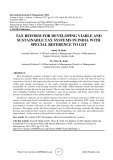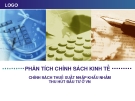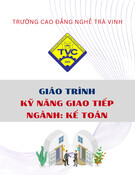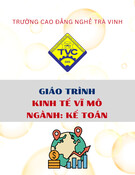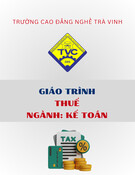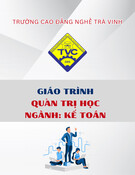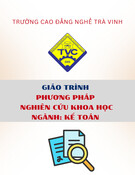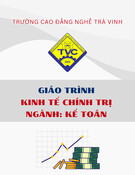
http://www.iaeme.com/IJM/index.as 8 editor@iaeme.com
International Journal of Management (IJM)
Volume 8, Issue 4, July– August 2017, pp.8–15, Article ID: IJM_08_04_002
Available online at
http://www.iaeme.com/ijm/issues.asp?JType=IJM&VType=8&IType=4
Journal Impact Factor (2016): 8.1920 (Calculated by GISI) www.jifactor.com
ISSN Print: 0976-6502 and ISSN Online: 0976-6510
© IAEME Publication
MOTHER OF ALL TAX REFORMS: INDIA’S
GOODS AND SERVICES TAX 2017
Dr. R B Krishna
Former Member of Income Tax Appellate Tribunal, India
Anand Kumar Jaiswal
PhD. Research Scholar, Jain University, Bangalore, India
ABSTRACT
Goods and Services Tax (GST) is the single biggest tax reform in India’s history.
No power on earth can stop an idea whose time has come, and it is now time of GST.
GST will be levied on the supply of goods or services or both in India. GST will subsume
a number of existing indirect taxes being levied by the Centre and State Governments.
With the introduction of GST, India had switchover to new indirect Tax regime which
is administered with the help of new age Information technology. In GST, all the
business transaction is captured on a common portal hence transparency in business
dealings are established.
With the introduction of the GST, the Central and State Governments will have
simultaneous powers to levy the GST. Credit for taxes would be given for input of goods
and services with the help of GSTN, which is a Technology platform for GST. GSTN is
a National Information Utility (NIU) and it will provide reliable, efficient and robust IT
Backbone for the smooth functioning of the Goods & Services Tax regime. The common
GST Portal of GSTN will function as the front-end of the overall GST IT eco-system.
The harmonization of laws, procedures and rates of tax across India would make
compliance easier and simple. The effect of GST is going to be far deeper than the tax
itself, because it will lead to digitization of businesses of India. This will also greatly
reduce the human interface between the taxpayer and the tax administration, leading to
speedy decisions. Successfully handling the technological failure and resolving of
teething problems of implementation of GST in the initial years would determine the
success of such mammoth tax reform. The use of new age information technology will
change the way taxes are paid and accounted. In the true sense, it is mother of all future
tax reforms not only in India but also for all countries across the world.
Key words: GST, Goods and Service Tax, Indirect Tax, Excise duty, Service tax, Sales
Tax.
Cite this Article: Dr. R B Krishna and Anand Kumar Jaiswal, Mother of All Tax
Reforms: India’s Goods and Services Tax 2017. International Journal of Management,
8 (4), 2017, pp. 8–15.
http://www.iaeme.com/ijm/issues.asp?JType=IJM&VType=8&IType=4

Dr. R B Krishna and Anand Kumar Jaiswal
http://www.iaeme.com/IJM/index.as 9 editor@iaeme.com
1. INTRODUCTION
“No power on earth can stop an idea whose time has come”, the Finance Minister Shri
Manmohan Singh had quoted Victor Hugo while presenting the historic Union Budget on 24th
July 1991. One such ideal that was translated into action on 1
st
July 2017 was Goods and
Services Tax (GST).
India witnessed the single biggest tax reform in its history, when at the stroke of midnight
of 30
th
June 2017, the Government of India launched the Goods & Services Tax (GST) at the
Central Hall of Parliament.
Prime Minister Shri Narendra Modi coined a new acronym for GST - ‘Good & Simple Tax’
while calling it a shining example of co-operative federalism. President Shri Pranab Mukherjee
termed GST a 'disruptive tax' and called upon the Central and States Governments to continue
to make improvements to GST law.
GST, stands for Goods and Services Tax, will be levied on the supply of goods or services
or both in India. GST will subsume a number of existing indirect taxes being levied by the
Centre and State Governments including Central Excise duty, Service Tax, VAT, Purchase Tax,
Central Sales Tax, Entry Tax, Local Body Taxes, Octroi, Luxury Tax, etc.
The taxable event in GST is supply of goods or services or both. Various taxable events like
manufacture, sale, rendering of service, purchase, entry into a territory of State etc. have been
done away with in favour of just one event i.e. supply.
2. NEW TAX REGIME
This is a tax regime which will use information technology as predominant tools for
administration, levy, collection, compliances and assessment. This tax regime will become
mother of all future tax reforms not only for India but also for other countries since the
experience of extensive use of information technology for a tax system of would give birth to
similar tax reforms across world. The developed economy of OECD
1
countries would learn
from the experiences of such tax reforms and implement similar ones in their home countries
to reap the fruits of such technological advanced administered tax regime.
GST is expected to rejuvenate and expand the Indian economy in a similar way the 1990s
liberalization had done for India. Future generations of India can look back on the GST Tax
law as one of the watershed moments in tax history that led to the concept of One Nation One
Tax.
The introduction of Goods and Services Tax (GST) is a significant reform in the field of
indirect taxes in India. With the introduction of GST, India had switchover to new indirect Tax
2
regime which is administered with the help of new age Information technology. This is first
time that such blending of tax law with technology is happening at the transaction level. This
would become a case study across various Universities and various countries may adopt it once
it gets stabilized in India.
1
The mission of the Organisation for Economic Co-operation and Development (OECD) is to
promote policies that will improve the economic and social well-being of people around the
world.
2
Indirect Tax is Tax levied on business transaction. Other taxes are Direct tax which is also
known as Income Tax levied on taxable Income from all business operation.

Mother of All Tax Reforms: India’s Goods and Services Tax 2017
http://www.iaeme.com/IJM/index.as 10 editor@iaeme.com
2.1. Methodology of Tax Credit in GST Regime
GST is a destination based consumption indirect tax. It has been designed in a manner so that
the tax is collected at every stage and the credit of tax paid at the previous stage is available to
set off against the tax to be paid at the next stage of transaction, thereby eliminating the
cascading effect of taxes. This eradicates “tax on tax” and allows cross utilization of input tax
credits between goods and services, which benefit the industry by making the entire business
supply chain as tax neutral. The seamless availability of Input Tax Credit across goods or
services at every stage of supply will enable streamlining of business operations. Further, since
all transaction are captured on a common portal, the transparency in business dealings is also
established.
2.2. Prior and Post GST Regime
Prior to GST India's indirect tax system consisting of many central and state levies, such as
VAT, sales tax, duty, service tax and luxury tax. GST will bring these indirect taxes under one
umbrella. The driving force to move to GST comes from the shortcomings of the current
indirect Tax system in the country and the need for a cost-effective, neutral, easy-to-operate tax
system, encouraging voluntary compliance and integrating India into a single common market.
By merging various central and state taxes into a single indirect tax, it would mitigate the
cascading effect of tax on tax and pave the way to a common national market in India.
Before the advent of GST, the fiscal power between the Center and State has been clearly
stated in the Constitution of India, with almost no overlap between their domains. The center
has the power to impose taxes on the production of goods (with the exception of alcoholic
beverages for consumption, etc.), while states have the power to impose taxes on the sale of
goods. In Inter-State sales, the Center has the power to impose a (Central Sales Tax) tax, but
the tax is collected and kept entirely from the State of origin. As far as services are concerned,
only center had the power to impose tax which was known as service Tax.
2.3. Power distribution between Centre and State Governments.
With the introduction of the GST, the Central and State Governments will have simultaneous
powers to levy the GST on Intra-State supply. And GST would also be levied by the Central
Government on all inter-State transactions of taxable goods or services. The Constitution of
India defines “Goods and Services Tax” as any tax on supply of goods, or services or both,
except for taxes on the supply of the alcoholic liquor for human consumption.
Given the federal structure of India, there will be two components of GST. One will be the
Central GST - GST (CGST) and other will be State GST (SGST). Both the center and the states
will simultaneously levy GST in the Value chain of the transaction. In case of inter-state supply
an Integrated Goods and Services Tax (IGST) would be levied. GST in form of Integrated
Goods and Services Tax (IGST) is a mechanism to monitor the inter-State trade of goods and
services and ensure that the SGST component accrues to the consumer State. It would maintain
the integrity of ITC chain in inter-State supplies. The IGST rate would broadly be equal to
CGST rate plus SGST rate. IGST would be levied by the Central Government on all inter-State
transactions of taxable goods or services.
Since GST would be levy on all supplies of goods and services, GST credit would be given
for input GST of goods and services. Hence net GST would be payable only on economic value
addition. Ultimately GST taxes would be paid only on consumption of goods and services,
which will accrue to the respective Governments.

Dr. R B Krishna and Anand Kumar Jaiswal
http://www.iaeme.com/IJM/index.as 11 editor@iaeme.com
3. CHRONOLOGY EVENTS FOR THE JOURNEY
Sixteen years’ earlier discussions were initiated by Prime Minister Shri Atal Bihari Vajpayee
on unified Indirect tax regulations in India and today it is reality. In the year 2000, the
Vajpayee Government opened the discussion on the GST through the creation of an expert
committee headed by Shri Asim Dasgupta, former Finance Minister of Western Bengal.
In the year 2003, the Kelkar Task Force suggested the need for a global indirect tax reform
within the GST.
In the year 2006, Finance Minister Shri P Chidambaram proposed GST in the Union Budget.
Empowered Committee (EC) of state finance ministers was assigned the responsibility to chalk
out a roadmap for its implementation.
In the year 2008, the empowered committee presented a report "A Model and Roadmap for
GST in India."
In the year 2009, the empowered committee after having held talks with the Center and
States submits its first discussion paper on goods and services Tax in India
In the year 2014, the Finance Minister Shri Arun Jaitley introduced the Constitution
Amendment Bill, 2014 in Lok Sabha for Goods and Services Tax.
In the year 2015, the lower house of parliament passed the Constitution Amendment for
implementation of Goods and Services Tax. And in the year 2016, the upper house of
Parliament passes the same.
In the year 2016, the GST Council was formed which was headed by Union Finance
Minister. The Council recommended the various legislations and rates of Tax including
exemptions, etc. for implementation of Goods and Services tax.
In the year 2017, various supporting legislations were passed by Center and States like
CGST, IGST, SGST and UTGST. And also, various Rules and notifications were issued by
Governments. The new tax structure was implemented with effect from July 1, 2017.
However, GST does not include taxes on petroleum products, electricity charges, excise
duty and sales tax on alcohol and stamp duty. Further Basic customs duty is also outside the
GST ambit.
4. MAIN SALIENT FEATURES OF GST
The main salient features of GST are as under:
(i) GST would be applicable on “supply” of goods or services as against the present concept of
tax on the manufacture of goods or on sale of goods or on provision of services.
(ii) GST would be based on the principle of destination based consumption taxation as against
the present principle of origin based taxation.
(iii) It would be a dual GST with the Centre and the States simultaneously levying it on a
common base.
(iv) Centre taxes that would be subsumed within GST are
a) Central Excise Duty;
b) Duties of Excise (Medicinal and Toilet Preparations);
c) Additional Duties of Excise (Goods of Special Importance);
d) Additional Duties of Excise (Textiles and Textile Products);

Mother of All Tax Reforms: India’s Goods and Services Tax 2017
http://www.iaeme.com/IJM/index.as 12 editor@iaeme.com
e) Additional Duties of Customs (commonly known as CVD);
f) Special Additional Duty of Customs (SAD);
g) Service Tax;
h) Cesses and surcharges insofar as they relate to supply of goods or services.
(v)State taxes that would be subsumed within the GST are:
a) State VAT;
b) Central Sales Tax;
c) Purchase Tax;
d) Luxury Tax;
e) Entry Tax (All forms);
f) Entertainment Tax (except those levied by the local bodies);
g) Taxes on advertisements;
h) Taxes on lotteries, betting and gambling;
i) State cesses and surcharges insofar as they relate to supply of goods or services.
(vi) A “Dual GST” model has been adopted in view of the federal structure of our country.
Centre and States will simultaneously levy GST on every supply of goods or services or both
which, takes place within a State or Union Territory. Thus, there shall be two components of
GST: (i) Central tax (CGST) (Levied & collected under the authority of CGST Act, 2017 passed
by the Parliament) (ii) State tax (SGST) (Levied & collected under the authority of SGST Act,
2017 passed by respective States)
(vii) Goods and Services Tax Network (GSTN): It is Technology platform for GST. This
National Information Utility (NIU) will provide reliable, efficient and robust IT Backbone for
the smooth functioning of the Goods & Services Tax regime.
5. GOODS AND SERVICES TAX NETWORK (GSTN)
It is a not for profit company and has been set up primarily to provide IT infrastructure and
services to the Central and State Governments, tax payers and other stakeholders for
implementation of the Goods and Services Tax (GST). It is unique, as it seeks, for the first time
to establish a uniform interface for the tax payer and a common and shared IT infrastructure
between the Centre and States.
Since, GST is a destination based tax, the inter- state trade of goods and services (IGST)
would need a robust settlement mechanism amongst the States and the Centre. This is possible
only when there is a strong IT Infrastructure and Service back bone which enables capture,
processing and exchange of information amongst the stakeholders (including tax payers, States
and Central Governments, Accounting Offices, Banks and RBI).
The common GST Portal developed by GSTN will function as the front-end of the overall
GST IT eco-system. The IT systems of CBEC and State Tax Departments will function as back-
ends that would handle tax administration functions such as registration approval, assessment,
audit, adjudication etc.

![Câu hỏi ôn tập Phân tích chính sách thuế [chuẩn nhất]](https://cdn.tailieu.vn/images/document/thumbnail/2025/20250630/nhinhi_2512/135x160/9611751338066.jpg)





